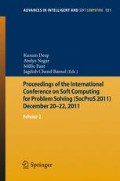Abstract
Peak ground acceleration (PGA) plays an important role in assessing effects of earthquakes on the built environment, persons, and the natural environment. It is a basic parameter of seismic wave motion based on which earthquake resistant building design and construction are made. The level of damage is, among other factors, directly proportional to the severity of the ground acceleration, and it is important information for disaster-risk prevention and mitigation programs. In this study, a hybrid intelligent system called ANFIS (the adaptive neuro fuzzy inference system) is proposed for predicting Peak Ground Acceleration (PGA). Artificial neural network and Fuzzy logic provide attractive ways to capture nonlinearities present in a complex system. Neuro-Fuzzy modelling, which is a newly emerging versatile area, is a judicious integration of merits of above mentioned two approaches. In ANFIS, both the learning capabilities of a neural network and reasoning capabilities of fuzzy logic are combined in order to give enhanced prediction capabilities, as compared to using a single methodology alone. The input variables in the developed ANFIS model are the earthquake magnitude, epi-central distance, focal depth, and site conditions, and the output is the PGA values. Results of ANFIS model are compared with earlier results based on artificial neural network (ANN) model. It has been observed that ANN model performs better for PGA prediction in comparison to ANFIS model.
Access this chapter
Tax calculation will be finalised at checkout
Purchases are for personal use only
Preview
Unable to display preview. Download preview PDF.
References
Campbell, K.: An Empirical Analysis of peak horizontal acceleration for the Loma Prieta, California, earthquake of October 18, 1989. Bull. Seis. Soc. Am. 81, 1838–1858 (1991)
Peng, K.Z., Wu, F.T., Song, L.: Attenuation characteristics of peak horizontal acceleration in Norheast and Northern China. Earthquake Engineering and Structural Dynamics 13, 337–350 (1985)
Sabetta, F., Puglioese, A.: Attenuation of peak horizontal acceleration and velocity from Italian Strong- motion records. Bulletin of the Seismological Society of America 77, 1491–1513 (1987)
Abrahamson, N.A., Litehiser, J.J.: Attenuation of vertical peak acceleration. Bulletin of the Seismological Society of America 79(3), 549–580 (1989)
Gupta, I.D., Rambabu, Rame Gowda, B.M.: An integrated attenuation relationship. Bulletin of Indian Society of Earthquake Technology 34(3), 137–158 (1997)
Singh, R.P., Aman, E., Prasad, Y.J.: Attenuation relations for strong seismic ground motion in the Himalayan Region. Pure and Applied Geophysics 147, 161–180 (1996)
Sharma, M.L.: Attenuation relationship for estimation of peak ground acceleration using data from strong motion arrays in India. Bulletin of the Seismological Society of America 88(4), 1063–1069 (1998)
Mittal, A.: PhD Thesis on: ‘Prediction of strong Ground motion for parts of North India’ IIT, Roorkee (2005)
Chandrasekaran, A.R., Das, J.D.: Strong Motion Arrays in India and Characteristics of Recent Recorded Arrays. Bulletin of The Indian Society of Earthquake Technology 27(1), 1–66 (1990)
Chandrasekaran, A.R., Das, J.D.: Strong Motion Records from Uttarkashi Earthquake. Memoir Geological Society of India (30), 133–147 (1995)
IMD: Chamoli earthquake of March 29, 1999 and its aftershocks, Indian Meteorological Department, Government of India, Seismology No. 2, p. 70 (2000)
Loukas, Y. L.: Adaptive neuro-fuzzy inference system: an instant and architecture-free predictor for improved QSAR studies. J. Med. Chem. 44, 2772–2783 (2001)
Jang, J.R.S.: ANFIS: adaptive-network-based fuzzy inference systems. IEEE Trans. Syst. Man Cybern. 23(03), 665–685 (1993)
Jang, J.S.R., Sun, C.T., Mizutani, E.: Neuro-fuzzy and soft computing: a computational approach to learning and machine intelligence. Prentice-Hall International, London (1997)
Takagi, T., Sugeno, M.: Fuzzy identification of systems and its applications to modeling and control. IEEE Trans. Syst. Man Cybern. 15, 116–132 (1985)
Pedrycz, W.: Fuzzy control and fuzzy systems. Wiley, New York (1989)
Sugeno, M., Kang, G.T.: Structure identification of fuzzy model. Fuzzy Sets Syst. 28, 15–33 (1988)
Kandel, A.: Fuzzy expert systems. Addison-Wesley, Reading (1988)
Kandel, A.: Fuzzy expert systems. CRC Press, Boca Raton (1992)
Mittal, A., Kanungo, D.P., Sharma, S.: Prediction of Peak Ground Acceleration using Artificial Neural Network for Himalayan Region, India. In: 14th Symposium on Earthquake Engineering at IIT, Roorkee (2010)
ASCE Task Committee: Artificial neural networks in hydrology. I: Hydrological applications. J. Hydrol. Eng., 5(2), 124–137(2000)
Author information
Authors and Affiliations
Corresponding author
Editor information
Editors and Affiliations
Rights and permissions
Copyright information
© 2012 Springer India Pvt. Ltd.
About this paper
Cite this paper
Mittal, A., Sharma, S., Kanungo, D.P. (2012). A Comparison of ANFIS and ANN for the Prediction of Peak Ground Acceleration in Indian Himalayan Region. In: Deep, K., Nagar, A., Pant, M., Bansal, J. (eds) Proceedings of the International Conference on Soft Computing for Problem Solving (SocProS 2011) December 20-22, 2011. Advances in Intelligent and Soft Computing, vol 131. Springer, New Delhi. https://doi.org/10.1007/978-81-322-0491-6_45
Download citation
DOI: https://doi.org/10.1007/978-81-322-0491-6_45
Publisher Name: Springer, New Delhi
Print ISBN: 978-81-322-0490-9
Online ISBN: 978-81-322-0491-6
eBook Packages: EngineeringEngineering (R0)

